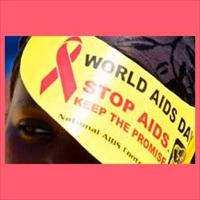SOUTH AFRICA: Chakras and children

The TsaBotsogo Community Development and Training
Centre, based in Dobsonville, Soweto, a sprawling township south of
Johannesburg, South Africa, works with teachers to identify vulnerable children in the community and refer them to the
centre’s trained volunteers for counselling. This year the organisation took 30
of the children to camp for a week, hoping to give them a chance to play, make
friends and build better relationships with TsaBotsogo volunteers, said
executive director, Kefilwe Ndaba.
“The Rolls Royce of Healing?”
The camp was where you might least expect to find talk
of alternative medicine, chakras and biofields, but Amanda du Toit and a
several other “energy medicine practitioners” arrived to help balance the
children’s energies, she said.
The term “alternative medicine” is often used to
describe practices outside the realm of your typical MD or nurse, and can
include homeopathy, the ancient Indian practice of Ayurvedic
medicine and naturopathy, in which healing is believed to be associated with
nature.
Practitioners of energy medicine like du Toit believe
physical illness is caused by imbalances between such energies in the body.
They say they use physical energy, such as vibration, as well as less tangible
forms of energy like "biofields", or the subtle energy believed to be
within all living things, to heal certain physical illnesses.
Using a system developed by a United States-based
entrepreneur known as Master Del Pe, these women say they have learned to read
chakras - the supposedly seven centres of spiritual energy in the human body in
yoga philosophy - and can open and close these centres in order to balance the
energies in the body.
By the end of the session, most of the younger children
were asleep, while the older ones sat quietly with their eyes closed. The
session involved no physical contact or verbal communication between the women
and children, which du Toit said was an advantage when working with children,
who might not be able to verbalise what they were feeling.
"[Energy medicine] is like the new generation of
healing; it's very effective - like the 'Rolls Royce' of healing," said du
Toit, who characterises Del Pe's approach as a mix of Eastern religions like
Buddhism and Hinduism. "We believe it's the medicine of the future."
Del Pe came to South Africa in 2006, punting free
lessons in his newly developed form of energy healing geared to help those
living with HIV and AIDS deal with opportunistic infections and other related
illnesses.
He has returned several times since, charging roughly
R1,500 (US$191) for one-day courses such as "Charting Your Seven Life
Cycles".
A very grown-up reality
According to a 2006 study by South Africa's department of
education, 15 percent of children will lose at least one caregiver to HIV/AIDS
by the age of 14 years, placing them at an increased risk of poverty,
malnutrition, exploitation and school absenteeism.
The South
Africa government has spent more than R563
million (US$72m) since 1997 on community-based
interventions aimed at, among other objectives, safeguarding at-risk
children. If the country meets the goals set out in its national strategic
framework for HIV and AIDS, 30 percent of vulnerable children and child-headed
households should be able to access social benefits and grants by the end of
2008.
However, the psychosocial
and emotional needs of children like those at TsaBotsogo are often harder to
budget for and even harder to identify, according to UNAIDS case studies.
"Many of them feel like they are alone," Ndaba
said. "Some of them talk, say they know they don't have a parent, that it
is difficult to go to school with nothing in their stomachs, but some are too
reserved," she commented. "It's not easy for them to open up, that's
why we've been playing lots of games, praying for them, hugging them, trying to
get them to trust us and open up."
Sophie Kekana, a counsellor
at TsaBotsogo, said working with the children was challenging. "You
can see from afar their needs - some are sick or hurting, others are bitter. A
lot of them are poverty stricken; you can see it in the way they eat.”
“At least now they know that they are not alone, that
they have mothers outside [of their families] that care for them," Ndaba
said.
Consent underlines all approaches
As the epidemics of HIV and AIDS drive on, people may be
turning to new ways of caring for those affected, but child rights activists
caution that the consent of both parents and children is essential, regardless
of the type or style of therapy.
"[Alternative medicine] might be perfectly harmless
but my concern is: ‘how would you explain something like this to children's
mothers?’" said Noreen Ramsden, materials developer for the Durban-based Children's
Rights Centre.
According to Ramsden, administering alternative
therapies like energy healing without informed parental consent reflected a
certain element of manipulation, and threatened to undermine a parent's right
to guide their children's upbringing.
TsaBotsogo’s Ndaba admitted that energy healing was not
originally on the programme, and was therefore not explained by teachers to
caregivers at the time they obtained consent for the children to go camping.
Helen Meintjies, a senior researcher at the Children's
Institute at the University of Cape Town, agreed with Ramsden, cautioning that
the danger of manipulation was very real when working with people who were
unwilling to say ‘no’ in the face of something they viewed as a favour.
"Consent issues apply across the board when working
with children, regardless of the activity, and that means kids must be informed
[of the activity] in a way that's understandable," Meintjies said.
"Don't underestimate the importance of kids understanding what they are
entering into."
 Back and Next - Back and Next
Back and Next - Back and Next See Also - See Also
See Also - See Also